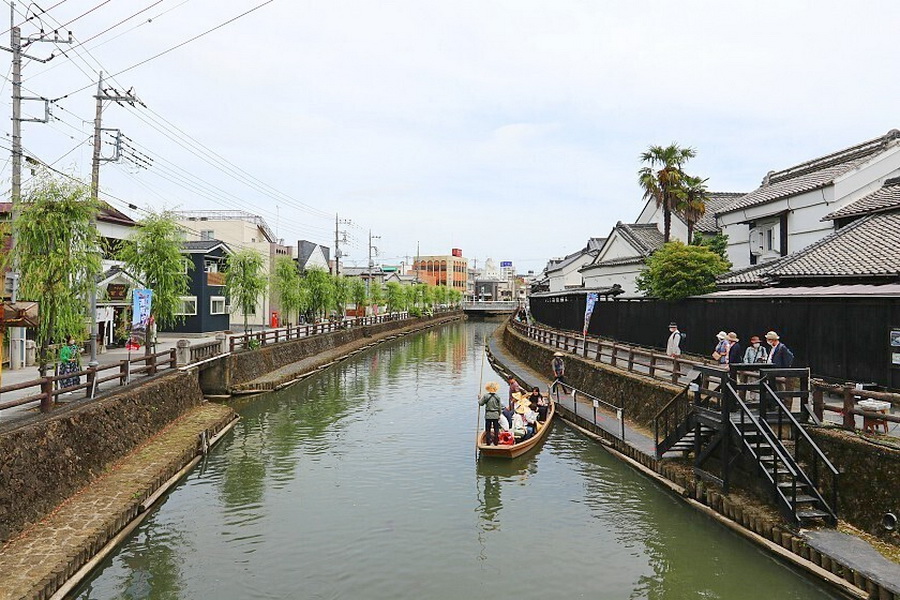Photo source: www.japan-guide.com
Just about a two-hour drive from Tokyo lies a remarkable destination where centuries of tradition and culture remain vibrantly alive – the city of Tochigi (栃木市). Known for its well-preserved Edo-era (1603–1868) warehouse buildings, scenic river cruises serenaded by boatmen’s songs, and a deeply authentic historical ambiance, Tochigi also takes pride in producing some of Japan’s most delicious strawberries.
Learn more about this captivating city in our detailed Tochigi Travel Guide.
Tochigi Tours
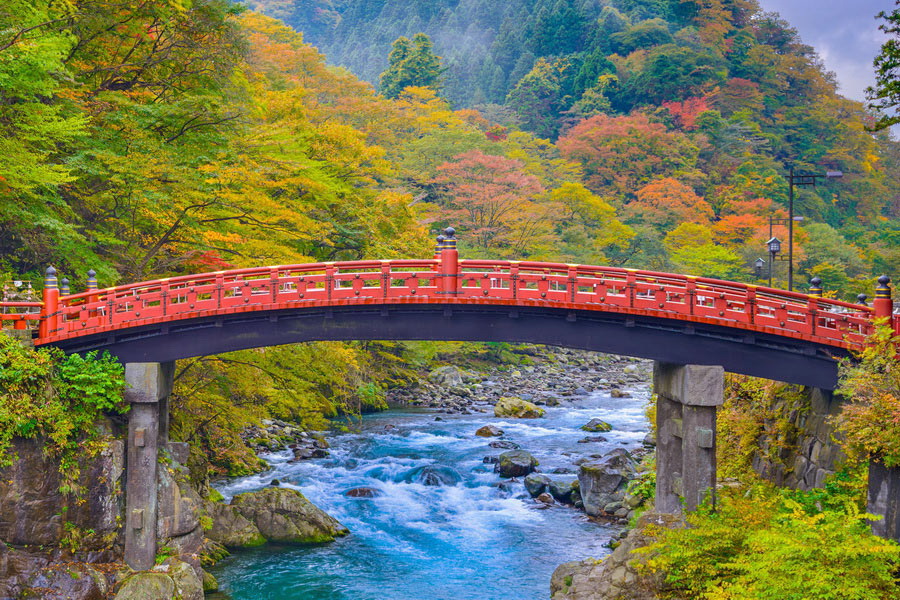
Tochigi is located just about 100 km north of Tokyo, making it one of the top destinations for day trips from the capital. The journey by train takes anywhere from 41 minutes to 2 hours, depending on the route. These short excursions typically include a walk through the historic city centre along the Uzumagawa River and visits to the city’s main landmarks.
Multi-day tours are also highly recommended. Travellers can enjoy seasonal festivals, explore local museums, and engage in a wide range of experiences centred on traditional crafts, cultural heritage, and nature. By spending two or three days in the region visitors can gain a deeper understanding of Tochigi’s history and lifestyle, as well as explore nearby towns and attractions. Nikkō (日光市) renowned for its ornate temples and stunning natural surroundings, is about 40 km away via the shortest itinerary. Even closer is Utsunomiya (宇都宮市), the capital of Tochigi Prefecture, located just 30 km from the city. Utsunomiya is well-known for its architectural charm and cultural vibrancy. Aabove all, for its signature fried dumplings named gyoza, which have earned it a reputation as Japan’s unofficial gyoza capital.
Best Time to Visit Tochigi
The best time to visit Tochigi is during spring, especially April to May, or autumn, from September to November, when the weather is most pleasant, and the city comes alive with cultural events. Both spring and autumn provide favourable conditions for travel, making each one a strong contender for the best season to visit Tochigi.
Spring
Spring temperatures in Tochigi are mild and comfortable, ranging from 8–12°C (46.4-53,6°F) in March, around 15°C (59°F) in April, and reaching approximately 20°C (68°F) in May. Late March and early April are also popular times to visit, as cherry blossoms and azaleas are in full bloom and the strawberry season reaches its peak. This period also marks the city’s busiest festival season, with numerous traditional events taking place.
Another reason many visitors come to Tochigi in April and May is to see carps, which are a beloved symbol of the city. In spring, the Uzumagawa River fills with hundreds of these colourful fish, creating a striking and memorable scene.
Summer
Due to its humid continental climate, Tochigi experiences hot and rainy summers, with temperatures often reaching 30°C (86°F). During this season, the number of tourists tends to decrease. However, summer still offers enjoyable options: countryside picnics, catamaran, or canoe rides on the Watarase-yusuichi Reservoir (渡良瀬遊水地), and the Hydrangea Festival, held in June and July on Mt. Ohira (大平山) in the southern part of the city.
Autumn
October is widely considered the best month to visit in autumn. The weather is crisp and dry, the trees are ablaze with vivid foliage, and the atmosphere is perfect for walking tours both in town and through the surrounding countryside.
Winter
Winter in Tochigi is relatively mild, with average temperatures between 5°C (41°F) and 10°C (50°F) and infrequent snowfall. February is typically the snowiest month, although it snows only once or twice a week on average. While winter is not considered a peak tourist season, Tochigi’s main attractions remain accessible. Visitors can enjoy local museums, explore the historic Kuranomachi (蔵の町) old town, or relax in a traditional onsen.
History of Tochigi
The history of Tochigi stretches back to the Palaeolithic era, as archaeological excavations confirm that people inhabited the area of the present-day city even in those early times. However, it was during the Edo period (1603–1868) that Tochigi experienced its most significant historical development.
In 1603, Japan’s capital moved from Kyoto (京都市) to Edo (now Tokyo), prompting the creation of new logistics routes to support the growing city. One of the most vital was the river route linking Nikkō and Edo. This network of waterways included the Uzumagawa River, also known as the Tomoeha River, which passed directly through the small settlement of Tochigi.
Warehouses were built along the riverbanks to store goods as trade flourished along this route, and Tochigi gradually became a significantcommercial hub. Over time, the city expanded beyond its trading roots to become a centre of culture, crafts, and the arts.
By the 19th century, Tochigi had become the most important city in the region. In 1873, it was named the capital of the prefecture that shares its name. However, this status changed in 1884, when Utsunomiya was designated as the new prefectural capital: a role it continues to hold today.
Things to Do in Tochigi
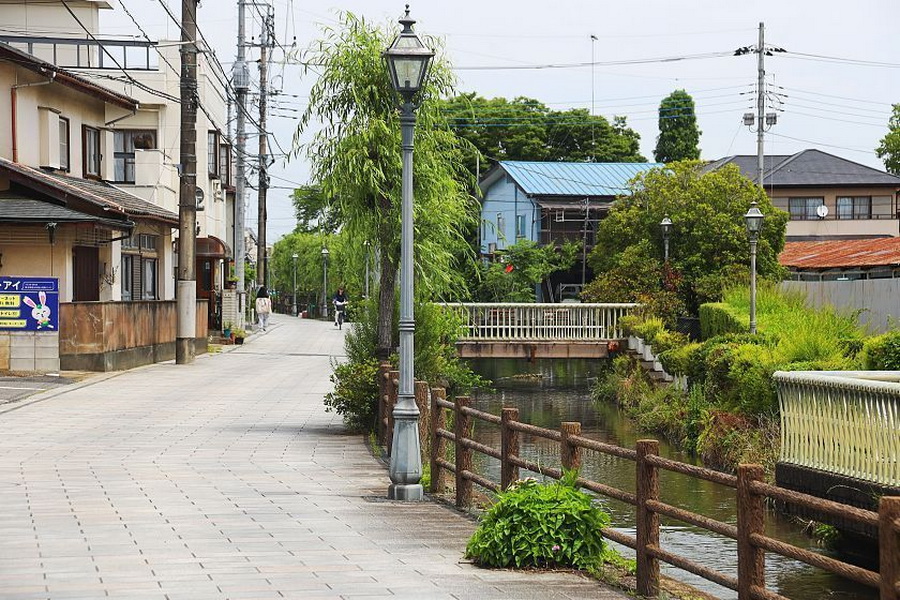
Photo source: www.japan-guide.com
Tochigi offers a wide range of experiences rooted in history and culture, from discovering centuries-old architecture to visiting sacred shrines and tranquil temples. If you're wondering what to do in Tochigi, these timeless landmarks are a perfect place to start.
Kuranomachi (蔵の町)
This historic district is Tochigi’s signature attraction. The name "Kuranomachi" comes from the Japanese word kura, which means “warehouse”. Lining the streets are warehouses from the Edo period, some of which are up to 400 years old. While most have been carefully preserved in their original state, some have been transformed into museums, galleries, and cafes. A stroll through Kuranomachi offers a captivating glimpse into the atmosphere of old Japan and is a must on any list of Tochigi sightseeing experiences.
Kauemoncho (嘉右衛門町)
Located nearby, the Kauemoncho area is another well-preserved neighbourhood known for its traditional architecture. Designated as a National Preservation District, its historic residences remain untouched by time, contributing to the city’s cohesive and authentic historical ambiance.
Ohirasan-jinja Shrine (太平山神社)
Perched on the summit of Mount Ohira, Ohirasan Shrine is a renowned Shinto site dating back to the 9th century. Pilgrims reach the shrine by climbing a staircase of around 1,000 steps. According to tradition, the 42 deities enshrined here offer blessings of happiness and good health to worshippers and their families. A nearby observation deck rewards visitors with panoramic views of Tochigi and the surrounding countryside.
Izurusan Manganji Temple (出流山満願寺)
Built in the 8th century, this ancient Buddhist temple is located in the Izurumachi district (出流町), some 20 kilometres north-west of the city centre. Nestled among forests, waterfalls, and notable limestone caves, the temple is known for its serene atmosphere and spiritual significance.
Tochigi City Hall (栃木市役所)
Constructed in the late 19th century, this Western-style administrative building reflects the city’s brief role as prefectural capital. Today, it stands as the only surviving architectural example from that era, offering cultural and historical value to Tochigi’s urban landscape.
Tsukada Memorial Hall (塚田歴史伝説館)
This historic site is marked by a distinctive 120-meter-long black wall, which makes it one of the most eye-catching buildings along the Uzumagawa River. A series of Edo-period warehouses and the former residence of the influential Tsukada merchant family can be found behind it. The property now serves as a museum, showcasing local history and family heritage.
Tochigi Museums
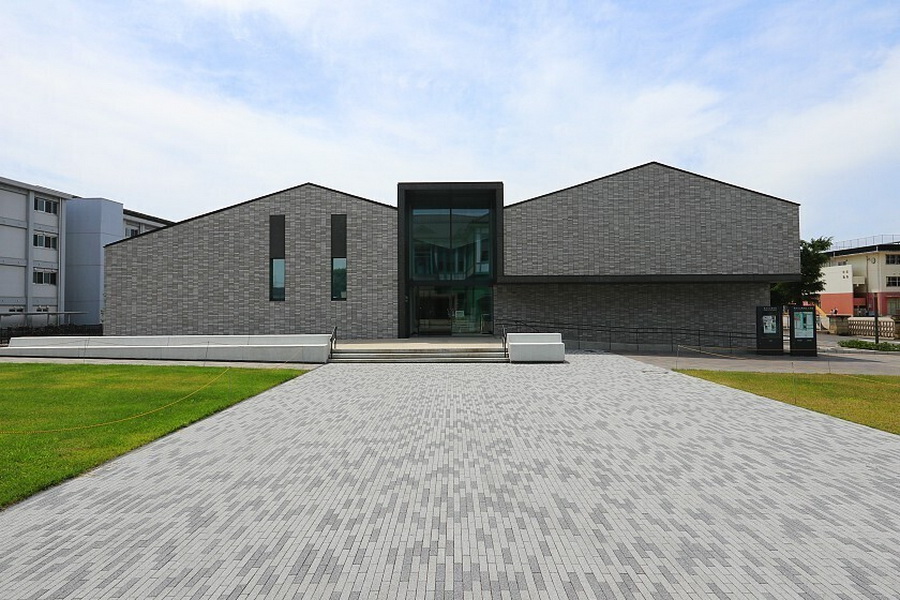
Photo source: www.japan-guide.com
Tochigi, a city with deep-rooted traditions and a historical charm, also boasts a rich museum scene that allows visitors to experience its unique culture and creative spirit.
Tochigi City Art Museum (栃木市立美術館)
Opened in 2022 on one of Tochigi’s central streets, this contemporary museum features a varied collection of works by artists associated with the city. Its neighbouring annex, the Tochigi City Literature Museum (栃木市立文学館), showcases the region’s literary heritage and shares the same modern aesthetic.
New Ginger Museum (岩下の新生姜ミュージアム)
Perhaps the most unconventional of Tochigi’s cultural venues, the New Ginger Museum is instantly recognisable thanks to the giant inflatable pink ginger figure that sits at its entrance. Founded in 2015 by Iwashita (Japan’s top producer of young pickled ginger) this playful, all-pink museum is packed with ginger-themed installations, quirky sculptures, photo zones, and even a restaurant and branded store.
Tochigi Doll Float Museum (とちぎ山車会館 / Daishi Kaikan)
This museum celebrates the spirit of the Tochigi Aki Matsuri (とちぎ秋まつり), a grand autumn festival held every two years. Inside, you’ll find elaborately handcrafted floats, traditional decorations, and festival artefacts that recreate the vibrant atmosphere year-round.
Tochigi Kuronamachi Museum of Art (栃木蔵の街美術館)
Housed in three beautifully restored warehouses from the Edo-period, this small museum displays works by local artists while preserving the architecture of old Tochigi. The blend of art and history makes it a quiet but atmospheric stop-off for those seeking a slower pace of discovery.
The city is also home to several speciality museums worth exploring:
Tochigi Utamaro Museum (栃木歌麿館) – Dedicated to the famed ukiyo-e artist Kitagawa Utamaro (18th century), this museum showcases his iconic woodblock prints and influence.
Tochigi City History Museum (栃木市郷土参考館) – A small but informative centre chronicling local history, artifacts, and daily life in Tochigi through the ages.
Okada Memorial Hall, Daikan Yashiki (岡田記念館) – Housed in a traditional residence, this museum traces over 500 years of the influential Okada family’s legacy.
Entertainment, Parks, and Shopping
Whether you want to explore Tochigi’s cultural heritage, try your hand at traditional crafts, take part in a local festival, or spend some time outdoors, the city offers something for every interest. Here are some of the best things to do in Tochigi to keep yourself entertained.
Entertainment
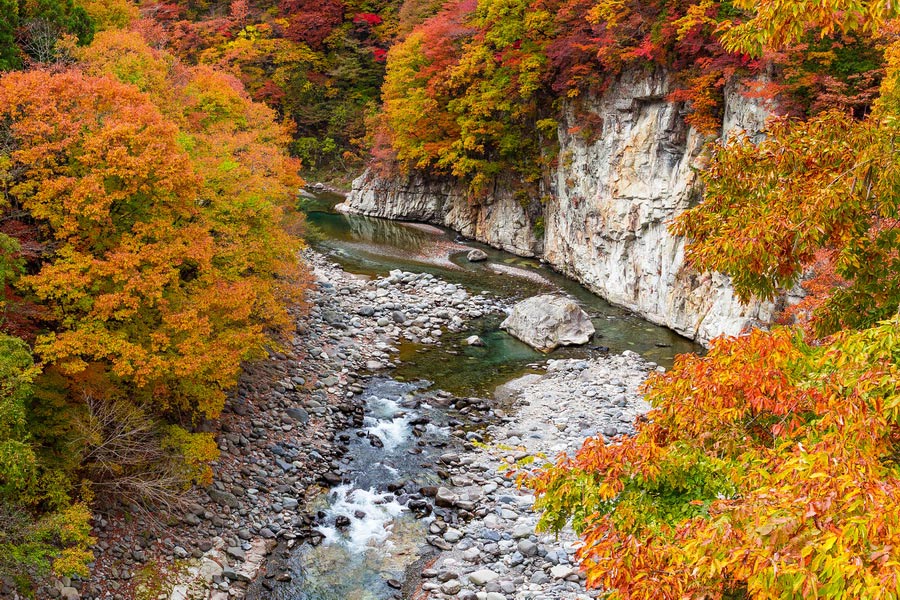
The Uzuma River boat cruise in Tochigi is one of the city's most popular experiences, offering a picturesque and peaceful way to discover the historic centre. On this 20-minute trip aboard a traditional wooden boat, you’ll pass by Edo-period warehouses, feed the colourful carp that inhabit the river, and hear stories – sometimes even songs – from the boatman.
Experiencing a traditional event is one of the most engaging ways to connect with Tochigi’s heritage. The Tochigi Utamaro Festival (歌麿まつり), held annually in autumn (October–November), which celebrates the city's Edo-period atmosphere and its connection with the ukiyo-e artist Kitagawa Utamaro, is one of the region's flagship events. Another major cultural event is the Aki Matsuri (とちぎ秋まつり), a spectacular platform festival held every two years in November. With its ornate floats and lively processions, it attracts thousands of visitors and is considered one of Tochigi’s most important celebrations.
In spring, don’t miss the Uzuma Koinobori Festival (うずまの鯉のぼり), held along the Uzuma River in honour of Children’s Day on May 5. Hundreds of colourful carp-shaped flags made of paper or fabric are suspended over the water, creating a whimsical and festive spectacle that delights both children and adults alike.
To truly connect with Tochigi’s traditional culture, try a hands-on workshop inspired by Edo-period crafts. You can make Japanese sweets, mix your own incense, or create earrings in historical styles – all using classic techniques. Round off the experience with a stroll through town in a rented kimono, available from a number of local shops.
For a restorative break, visiting an onsen is one of the most relaxing things to do in Tochigi. There are several hot springs in and around the city that are popular with both locals and visitors alike. Near the Tochigi General Sports Park (栃木市総合運動公園) is the Yura no Sato Onsen (栃木温泉 湯楽の里), a small but well-loved bathhouse known for its friendly atmosphere. In the mountainous northwest of the city, Kashiwagura Onsen Taishikan (柏倉温泉 太子館) offers a more secluded setting surrounded by nature. For those wishing to go further afield, the renowned Kinugawa Onsen (鬼怒川温泉) near Nikkō is an hour’s drive away and is among the most famous hot springs in the region.
Tochigi’s natural surroundings offer a peaceful escape, with easy hiking trails and panoramic views that are perfect for a day in the great outdoors. The most popular routes are located near Mount Ohira, where the landscape changes beautifully with the seasons. The trails are relatively easy and suitable even for beginners. Reaching the summit of Mount Ohira (155 m) usually takes just over an hour and offers hikers with breathtaking views and a peaceful atmosphere.
For adventure seekers and those interested in longer excursions, the Cave of Utsuno (宇津野洞窟) is one of Tochigi’s most intriguing hidden spots. Formed during the Tertiary period of the Cenozoic era, over 2.6 million years ago, this ancient cave is open to the public and located just 15 km from Tochigi station.
Parks in Tochigi
Tochigi’s landscape includes mountains to the west and the heart-shaped Watarase-yusuichi Reservoir to the south, allowing visitors to enjoy nature without even leaving the city.
The natural area western of Tochigi covers more than 1,000 hectares and includes scenic mountains such as Mount Ohira and Mount Iwafune (岩船山), as well as several temples and panoramic viewpoints. This vast landscape forms Ohirasan Prefectural Natural Park, which stands out as the most important natural attraction in the city - and a top sightseeing site for those seeking quiet trails and seasonal beauty.
There are also smaller parks in the western part of the city, such as Tochigi City Ohira Sports Park and the picturesque Nagano Riverside Park, located just to the north. These green spaces are perfect for light recreation and relaxing in nature.
In Tochigi’s residential neighbourhoods, various parks offer tree-lined walking paths, cherry blossom trees in spring, and areas for sports and family activities. These include Ekimae Park (駅前公園), located near the train station; Tochigi City General Sports Park (栃木市総合運動公園); and Mikamoyama Park (みかも山公園), not far from Iwafune station.
Shopping in Tochigi
Tochigi is a small town, and although there are branches of major retailers like AEON and Uniqlo, the shopping experience here is centred on small, charming local shops that reflect the character and culture of the town.
A good place to start is Kuranomachi Kankokan (とちぎ蔵の街観光館), a tourist information centre and souvenir shop housed in a renovated Edo-period warehouse. It offers a wide selection of locally themed souvenirs, crafts, and local specialities. Another popular destination is Koedo Ichiba (コエド市場), a spacious market-style shop with a variety of regional products.
One of the best-loved souvenirs from Tochigi is Tochisuke (とち介), the city’s official mascot, a cheerful white creature wearing a black hat shaped like a traditional kura-roof. You’ll find his image on everything from cuddly toys and phone charms to mugs, stamps, and other playful gifts, ao you can bring a bit of Tochigi home with you.
Food in Tochigi
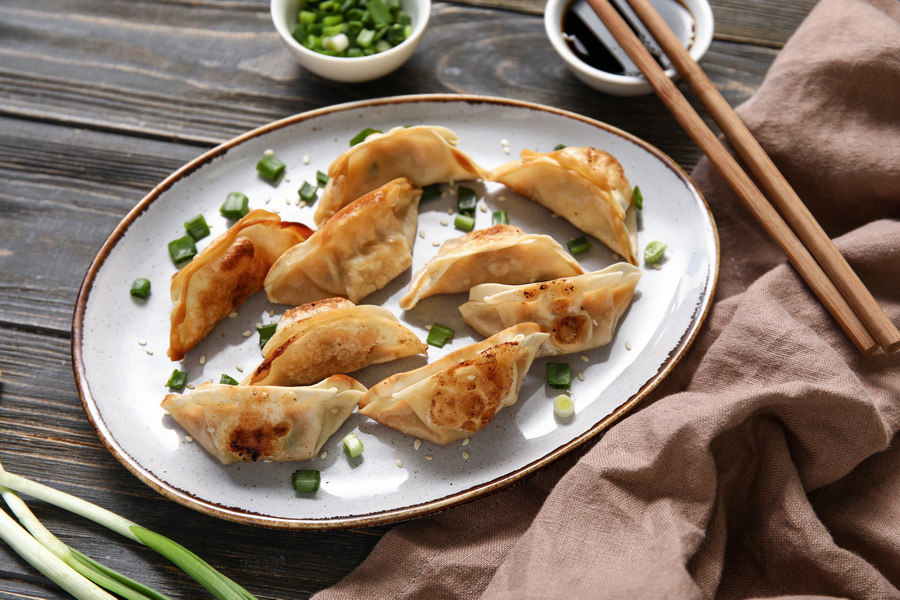
Japanese Cuisine
Tochigi’s cuisine reflects both regional flavours and local traditions, offering visitors a variety of distinctive dishes and culinary experiences.
A standout highlight is Tochigi Edo cuisine, served at the historic Kanahan Ryokan's restaurant. This style of dining is considered the city’s signature culinary experience, with dishes prepared and presented in the traditional manner of the 17th to 19th centuries. Every detail, from the ingredients to tableware, evokes the atmosphere of the Edo period.
The region's famous strawberries are another local treasure. Tochigi Prefecture is Japan’s leading producer of strawberries, and the fruit is used in a wide range of desserts. Strawberry picking is a popular seasonal activity, with many local farms welcome guests to sample the fruit right in the field.
Tochigi also shares several culinary specialities with neighbouring cities such as Nikkō and Utsunomiya. Among them are yuba (湯葉, delicate sheets of soybean Tofu skin), soba (蕎麦, buckwheat noodles), gyoza (餃子), pan-fried dumplings), and a selection of Tochigi's regional sake (栃木酒), which is known for its quality and craftsmanship.
Traditional Japanese meals can be enjoyed at local establishments such as Taroan Fukuda, known for its handmade udon; Unagi no Unakei, specialising in eel dishes; and Menkura Atsuo, popular for its ramen.
European Cuisine
Those looking for Western flavours will find European-inspired menus at Kura-no-machi Dining AO (蔵の街ダイニング 蒼), Café Bazzar, and other downtown restaurants.
Coffee Houses, Bakeries, and Patisseries
For coffee and sweets, options range from international chains like Starbucks to charming Japanese cafés such as Kitagura Café Higano (北蔵カフェひがの), Carioca Coffee (自家焙煎キャリオカコーヒー), and Wakura Cafe, where you can enjoy dessert and also rent a kimono for a stroll around the city.
City Transport in Tochigi
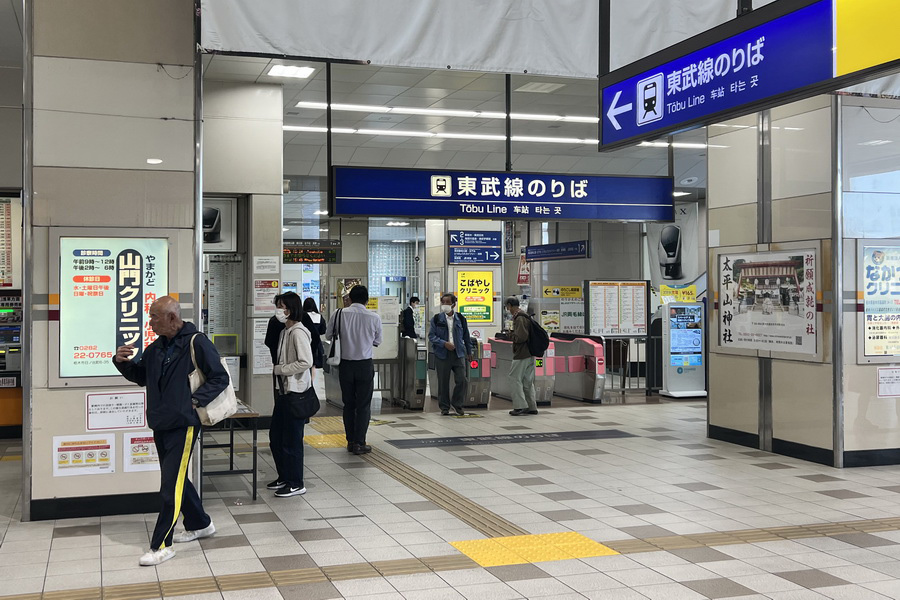
Tochigi’s main historical attractions are all within easy walking distance of the train station and of one another, making the city especially pleasant to explore on foot. Bicycles are also a popular choice, with rentals widely available and well suited to the city’s compact layout.
For longer journeys or on rainy days, Tochigi’s local bus system offers a convenient alternative. The city operates 12 routes linking the historic center with more remote neighborhoods, including service to Mount Ohira. Most routes are operated by Tochigi Kotsu (栃木交通) and JR Bus Kanto, with schedules available at the station and online. Special one-day bus passes are available, making it easy and affordable for visitors to get around.
Taxis are also readily available and can be found at Tochigi Station or booked through local providers such as Tochigi Taxi (栃木タクシー) and Utsunomiya Daiichi Kotsu (宇都宮第一交通), which also serve the broader region. While not always fluent in English, most drivers are familiar with key tourist destinations and accept cash and major IC cards.
How to Get to Tochigi?
Tochigi is about 100 km north of Tokyo, making it one of the most convenient destinations for a day trip from Tokyo. Excellent transport connections, make it easy to get there, whether you prefer to travel by train or by car.
If you're wondering how to get to Tochigi from Tokyo, the fastest and most convenient option is by train.
From Asakusa Station (浅草駅) in Tokyo, take the express train operated by the Tobu Railway company (東武鉄) directly to Tochigi Station (栃木駅) in the city centre. The journey takes approximately 1 hour and 10 minutes.
Alternatively, from Tokyo Station (東京駅) or Ueno Station (上野駅), you can board a bullet train on the Tōhoku Shinkansen (東北新幹線) high-speed line. Transfer at Oyama Station (小山駅) to the JR Ryōmō Line (両毛線), which will take you to Tochigi Station. This route also takes just over an hour in total.
For those travelling by car, Tochigi is about a 1.5-hour's drive from central Tokyo via expressways - ideal if you prefer flexibility or are plan to explore the surrounding region.
Currency in Tochigi
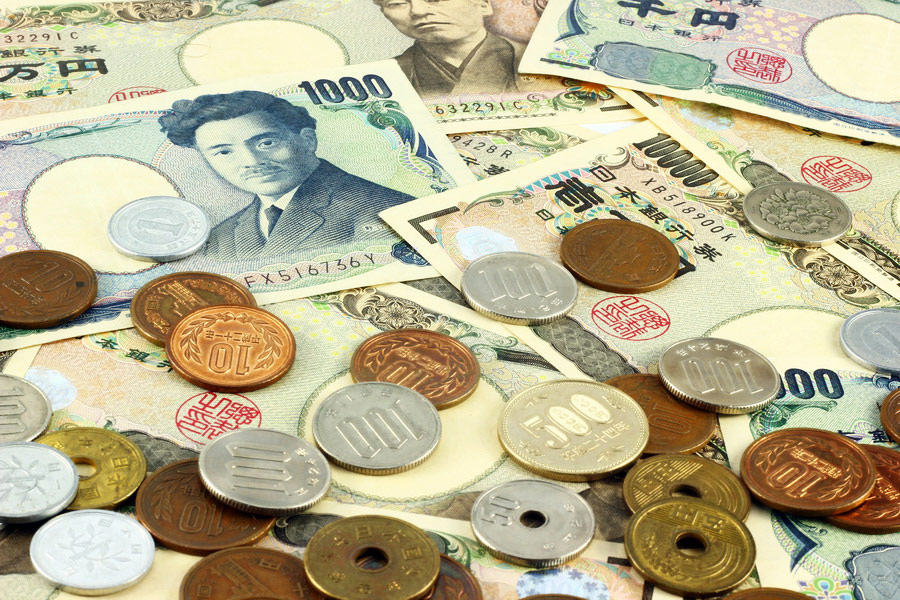
As in the rest of Japan, Tochigi's official currency is the yen. In 2025, the exchange rate is approximately 145 yen to one US dollar. While credit and debit cards are accepted in many hotels, restaurants, and chain shops, cash remains the main means of payment, especially in traditional districts like Kuranomachi and in more remote areas.
For this reason, it’s advisable to carry enough cash to cover your daily expenses, including transport, small restaurants, and souvenir shops, which may not accept cards.
Languages Spoken in Tochigi
The primary language spoken in Tochigi is Japanese. English is not widely used in everyday communication, though certain tourist activities, such as jewel-making workshops and other cultural experiences, are occasionally offered in English.
That said, many local attractions, shops, and services may require at least a basic understanding of Japanese. If you’re not comfortable with the language, it’s advisable to visit Tochigi with a local guide to ensure smooth communication and a more enriching experience.
Security in Tochigi
Tochigi is a quiet, small city renowned for its safety, making it a pleasant destination for both solo travellers and groups. The city has a very low crime rate and minimal risk of natural disasters: there is no access to the sea, and the area is not prone to earthquakes or volcanic activity.
Local services are reliable and efficient. Internet access is stable throughout the city, and visitors will find a selection of comfortable, well-maintained hotels.
Tochigi is never overcrowded, so you won’t encounter large crowds of tourists or long lines. This peaceful atmosphere allows you to enjoy the city’s centuries-old history at your own pace.


